LAST UPDATED 4/24/23 – Predicting Amazing Sunrises and Sunsets

If you’ve read my photography articles, you know how important the Golden Hours are for enhancing your photographs. Not only do these times have the best light, but they allow you to capture spectacular sunrises and sunsets.
Photographers are always chasing the light. In fact, in many respects, the quality of the light is more important than the subject you are shooting. I know photographers that will search for great light, and then find something interesting to shoot when they find it.
The proper light is important to capture a great picture. The added bonus is being able to get a great sunrise or sunset in the shot as well. That is why predicting amazing sunrises and sunsets is such a valuable tool for photographers.
| READ MORE: |
 |
| 10 Easy Vacation Photos Tips |
We have already discussed how to put yourself in the best position to get the proper light. In my article on 10 Easy Tips to Make Your Vacation Photos Really Pop, I discussed the importance of the Golden Hours. Making sure you are in the right spot at the right time is the best thing you can do to find great light.

But what about the amazing and dramatic sunrises and sunsets? Is there any method for predicting amazing sunrises and sunsets? Wouldn’t it be great if we could accurately predict how dramatic a sunrise or sunset will be? Having this information would make getting up at 4am on a Saturday much more palatable, that’s for sure.
The good news is, you can learn to predict amazing sunrises and sunsets. In this article on predicting amazing sunrises and sunsets, I am going to show you how. With some practice, you should be able to start accurately making these predictions just by looking at some simple weather factors.
In fact, with some of the tools that are available today, this process has become even easier. So, take good notes and be prepared to WOW your family and friends with your ability to predict sunrise and sunset awesomeness!
Weather Factors for Making Predictions
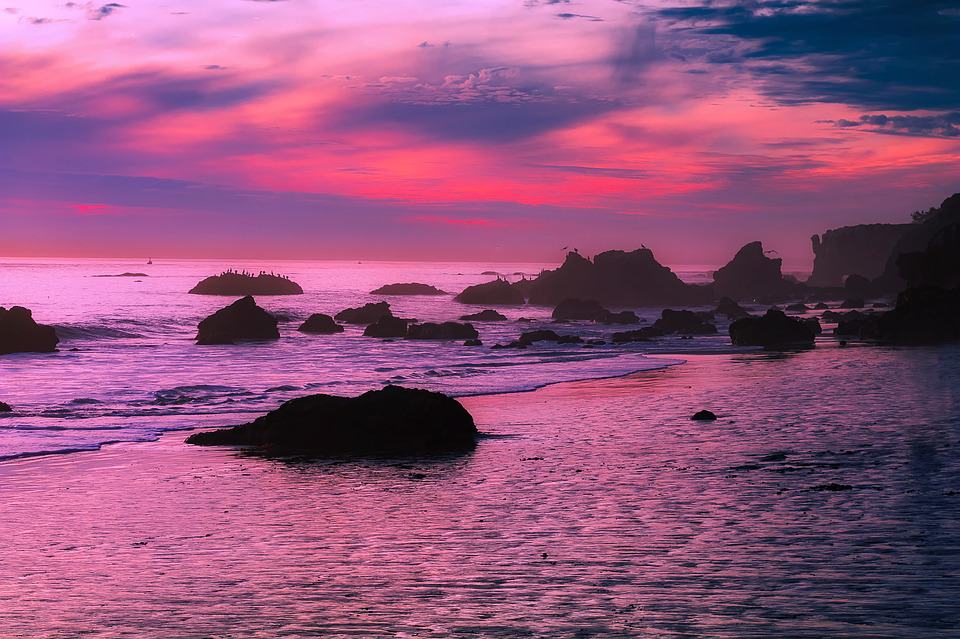
You don’t need to be a meteorologist to be able to reasonably predict when a great sunrise or sunset will occur. However, you do need to know how to collect some very simple weather-related information. These pieces of information are very important factors that determine how dramatic sunrise or sunset will be.
According to National Geographic’s The Science of Sunsets, there is a spectacular sunset every night. However, some nights our eyes just can’t pick up the beautiful red, purple, and orange light waves that make a great sunset so dramatic.
The light that is emitted from the sun comes in all colors. When that light enters the Earth’s atmosphere, the short-wave blue light gets scattered the most. This is why we see the sky as blue for most of the day.
However, during the time when the sun is rising and setting, the distance that light has to travel from the sun to our eyes is longer. Because these light waves have to travel a longer distance, it gives the long wave reds and oranges more time to scatter. This allows the reds and oranges to appear in the sky.
Certain weather factors can influence how much these long wave colors scatter and appear in the sky. That is where your ability to collect this information becomes important when trying to predict a great sunrise or sunset. So, take good notes!
Cloud Cover and Type of Clouds
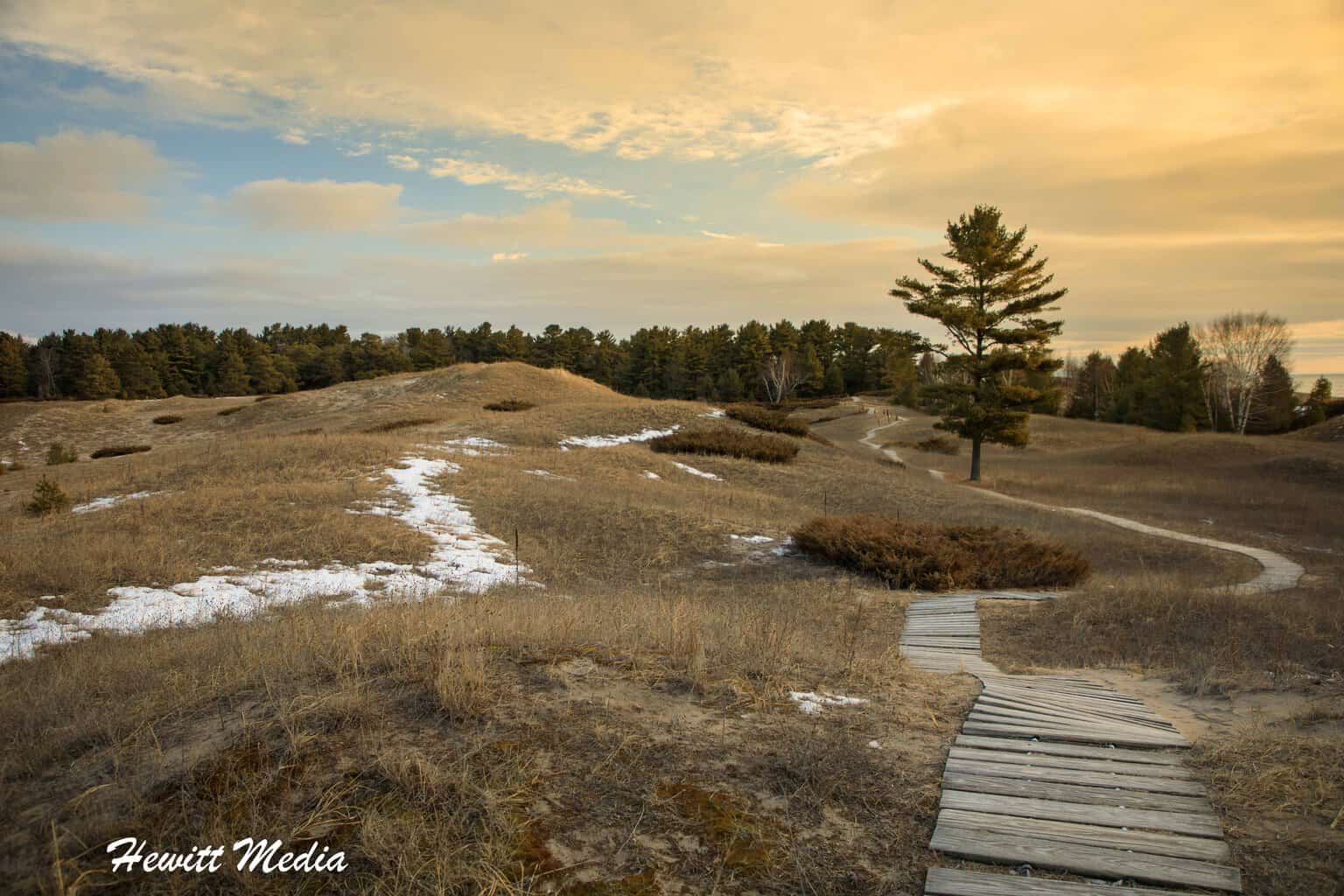
Arguably the single most important weather factor in predicting amazing sunrises and sunsets is the clouds. The type of clouds in the sky, the thickness of the cloud cover, and the height of the clouds all play very important factors in creating a great sunrise or sunset.
The proper clouds in the proper position will act as a canvas to display a brilliant sunrise or sunset. Conversely, if there aren’t enough clouds, or if it is overcast, it can mute an otherwise fantastically colored sky.
For an ideal sunrise or sunset, you should look for a high cloud cover. If the clouds are too low, they will block the red and orange colors in the sky. We also want to see very puffy clouds.
If the cloud cover is too thick, those red and orange wavelengths won’t be able to penetrate them. The ideal type of clouds for fantastic sunrises and sunsets are Cirrus clouds. These clouds are typically thin and wispy and almost look like cotton balls that someone has stretched.

Air Cleanliness
Another factor that can help in predicting amazing sunrises and sunsets is how clean the air is. Clean air does a fantastic job of scattering light. This is why you typically see some of the most fantastic sunrises and sunsets just after a thunderstorm.
The rain acts as a cleansing agent for the air, which provides a better opportunity for light to scatter. When a storm happens just before sunrise or sunset, more long-wave red and orange light is going to get scattered. This produces some pretty fantastic skies. This is why you see some of the most fantastic sunrises and sunsets in the tropics.
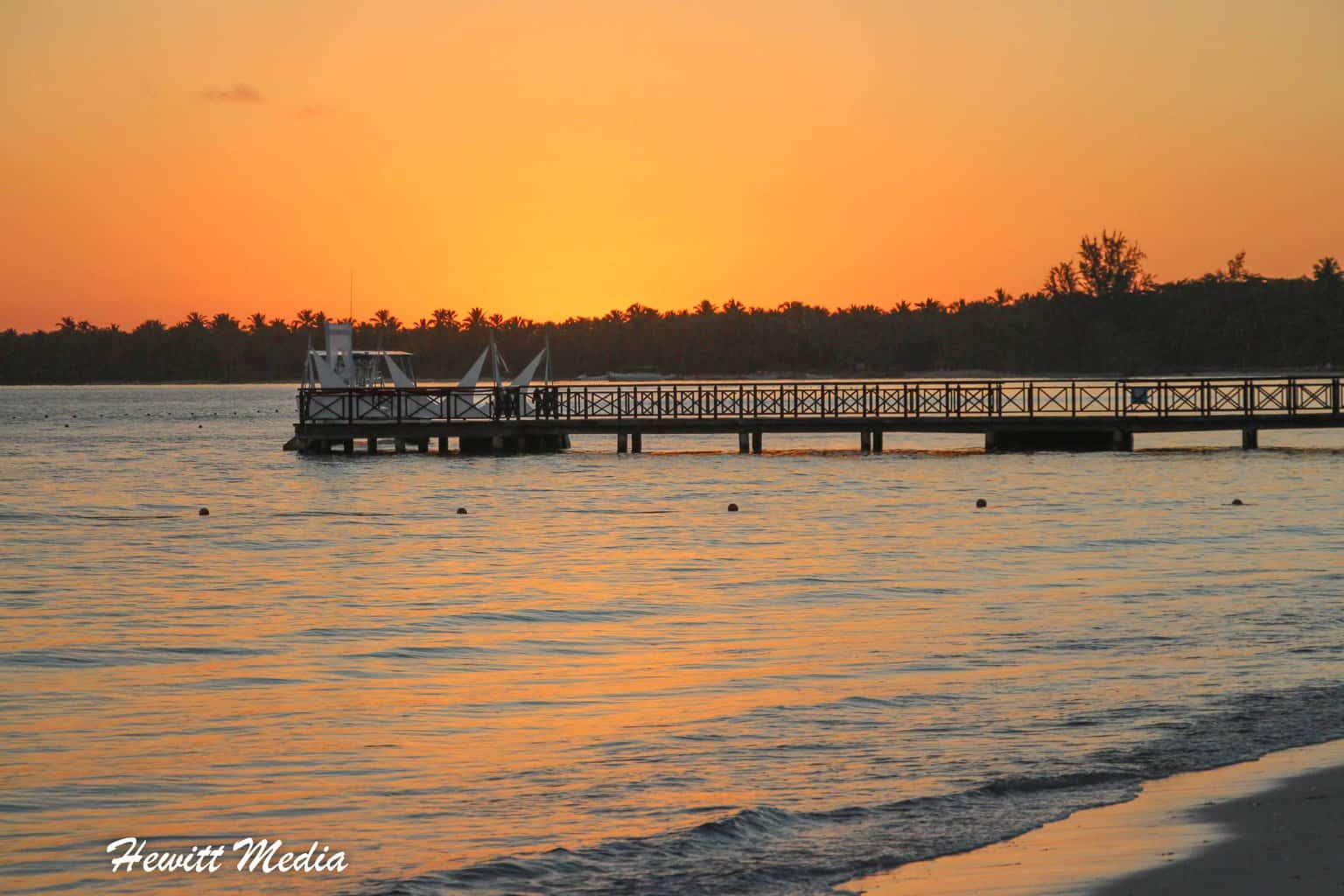
Humidity
The more moisture that is in the air, the less vibrant the colors in the sky will be. This is because moisture tends to make it more difficult for the light waves to scatter. Because of this, you will typically see more dramatic sunrises and sunsets when it is less humid.
So, the humidity is a factor that you are definitely going to want to be aware of when you are working on predicting amazing sunrises and sunsets.
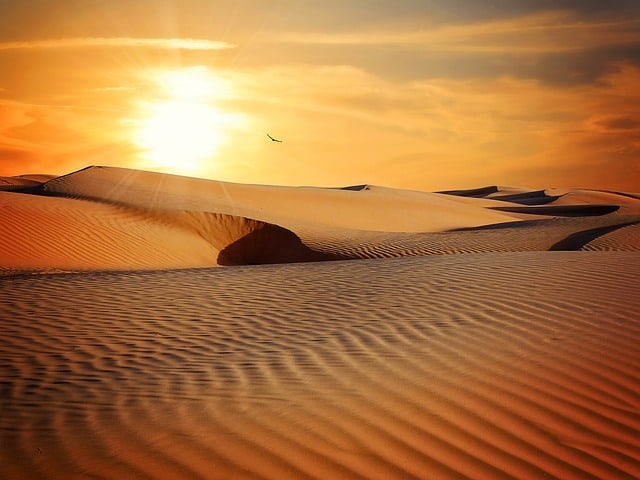
Wind
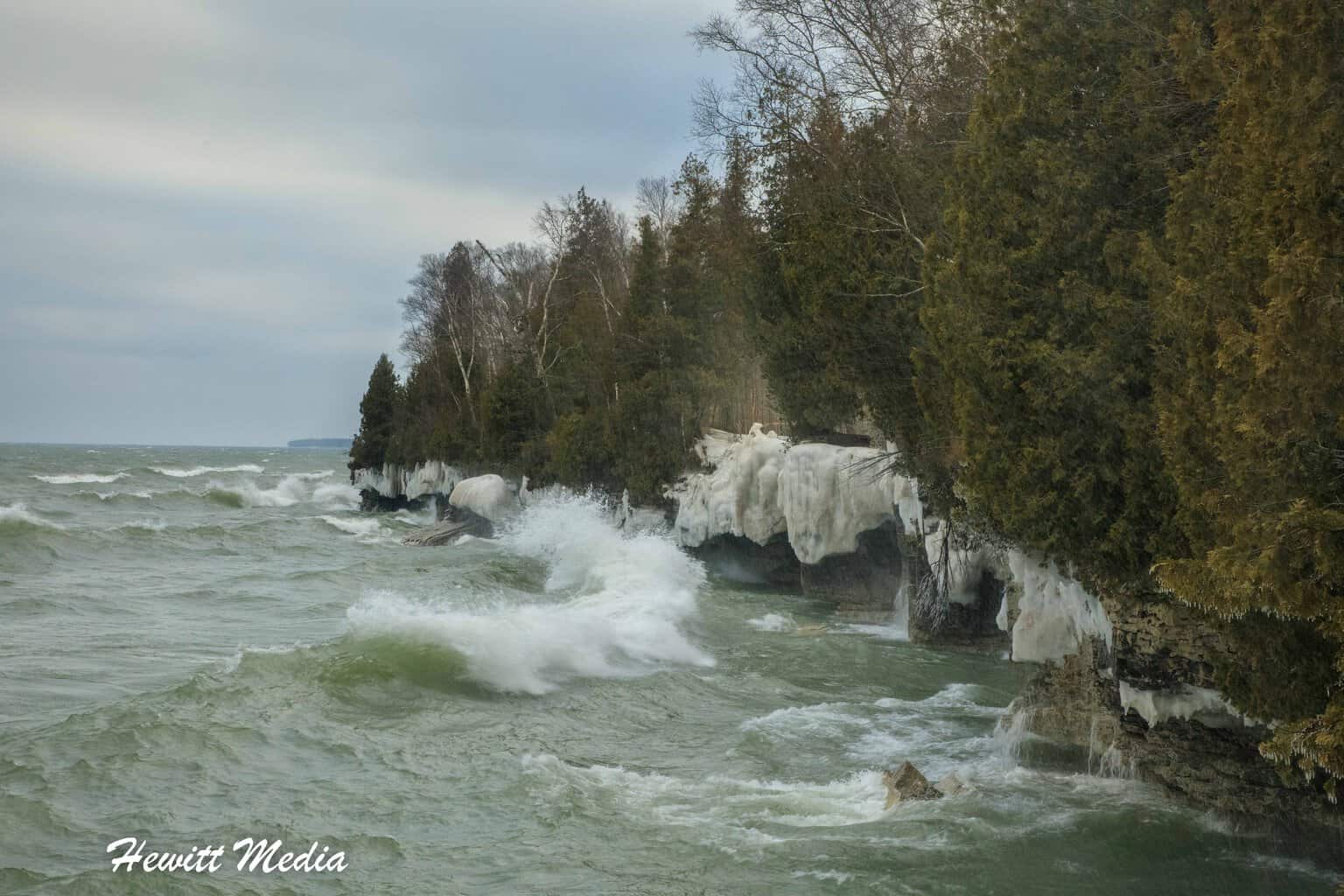
The wind is a factor in determining the brilliance of a sunrise or sunset. It can drastically change the other weather conditions necessary for creating a great sunrise or sunset. In other words, wind can either work in your favor, or it can work against you. It all depends on how the wind impacts the clouds and the cleanliness of the air.
For instance, if the wind starts to blow strongly and clears the sky of all cloud cover, it can have a devastating effect on the grandeur of a sunrise or sunset. Remember, the cloud cover is arguably the most important factor in creating a great sky.
Wind can also work against you if it blows smoke, pollution, or other dirty air into the vicinity. Clean air is important for producing a colorful sky, and the wind can impact this if it blows in dirty air.
On the other hand, wind can also really enhance a great sunrise or sunset. Wind can blow away heavy cloud cover and produce a sky that is more conducive to a great sunrise or sunset.
It can also blow away any dirty air and leave a clean, fresh atmosphere for Mother Nature to paint the sky. I typically look at wind as being the X Factor in predicting a great sunrise or sunset. It usually makes the prediction process a bit more difficult.
Summary
I realize that I just gave you a whole bunch of information to digest. So, let’s break it down into a summary that is easier to understand. I have included a list of the factors that you will use when predicting amazing sunrises and sunsets below.
Conditions for a Good Sunrise or Sunset
- High cloud cover with puffy clouds (ideally Cirrus clouds)
- Clean air (after a storm has some of the cleanest air)
- Low humidity
- Low wind (the X-Factor)
On the contrary, the following conditions can often lead to a less than stellar sunrise or sunset.
Conditions for a Poor Sunrise or Sunset
- Low or dense cloud cover
- Dirty air (pollution, smoke, or stale air)
- High humidity
- High winds (the X-Factor)
New Tools Make Predictions Even Easier
If keepig track of all this weather information seems too daunting, I have an easier solution for you. Predicting beautiful sunrises and sunsets has never been easier thanks to a few new tools.
These tools take the work out of the prediction process and give you some very easy to digest maps. You can use these maps to evaluate how dramatic of a sunrise or sunset you will see.
SkyFire App
The first tool that I am going to cover is called SkyFire. SkyFire is a subscription-based add-on that you can add to The Photographer’s Ephemeris (TPE) app for iOS or Android.
The TPE app is an app used by photographers to plan the natural lighting for their shots. It is an incredibly valuable tool that I will discuss in more detail in the next section on how to use this information to plan your shots.
Ultimately, what the SkyFire add-on does is evaluate all of the weather-related information I covered in the section above. Then, it gives you a color-coded map indicating where the best (and worst) sunrises and sunsets will occur.

As you can see in the image above, SkyFire gives you a map that color codes where the best conditions will exist for a fantastic sunrise or sunset. Anywhere you see reds and oranges, those areas will be conducive to a very colorful and fantastic sky occurring. On the contrary, anywhere you see blue is where the sky is predicted to be rather dull.
Sunsetwx Website
Photography enthusiasts who aren’t interested in paying for a sunrise and sunset service should not fret. There is a tool available that provides this functionality at no cost. The www.sunsetwx.com website provides much of the same functionality as the SkyFire add-on for TPE, but without a subscription fee. You don’t even need to register to check out the information.
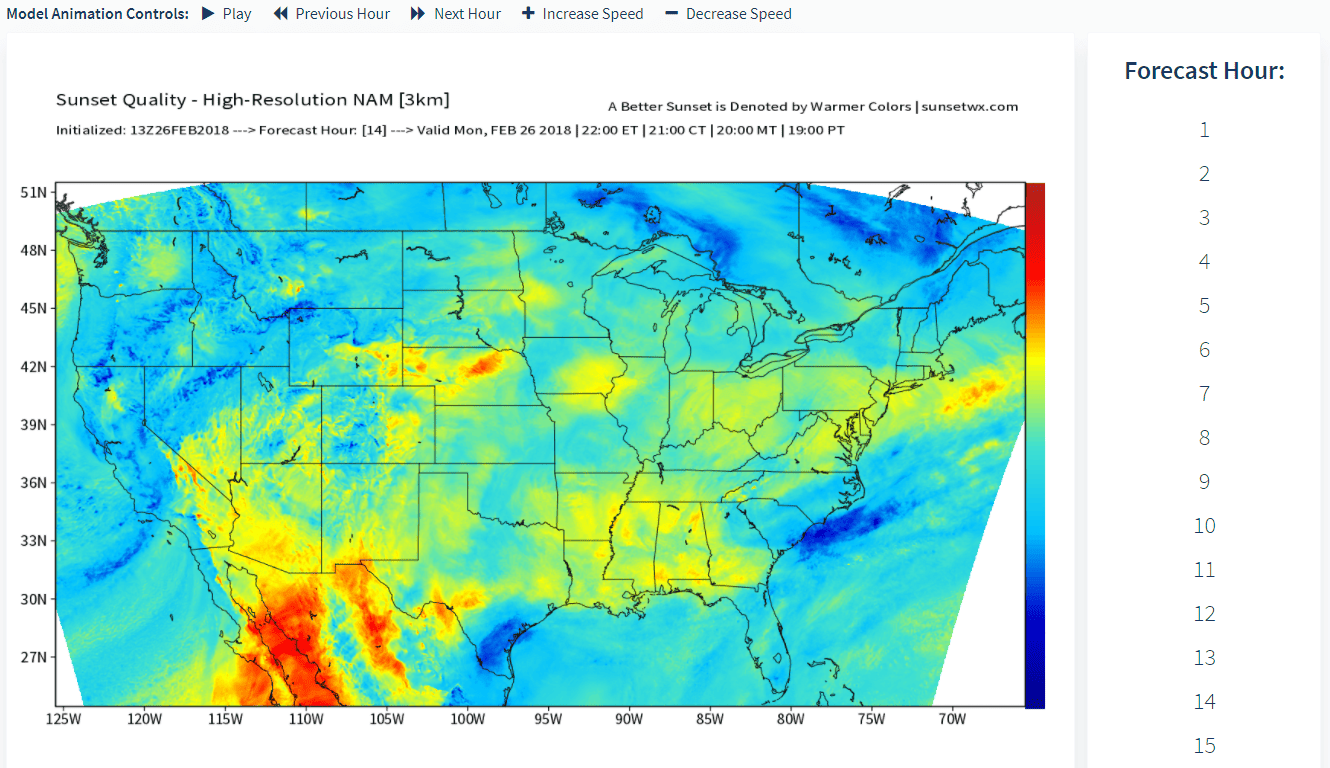
Keep in mind, the Sunsetwx website does not allow you to zoom in and zoom out like the SkyFire add-on does. However, it does allow you to get a general sense of how likely a good sunrise or sunset is to occur.
Simply choose the area that you want to evaluate (United States Map, Europe Map, or Worldwide Map). Then, select either sunrise or sunset. Once selected, you are then able to click thru the forecast hour to see the map change.
Using This Information to Get Great Shots
Pretty cool stuff, ha? Believe me, I was a bit skeptical at first. It’s not an absolute science. However, knowing a bit about how beautiful sunrises and sunsets occur can help you in predicting them. With the introduction of these great technologies, predicting great sunrises and sunsets is only going to get easier.
How to Use this Information
So now that you have this information, I am guessing you are wondering just how you can best use it. Don’t worry, I have you covered there too. There is more that goes into getting a great picture than just knowing where the good light (and beautiful skies) will be. Light is the most important factor, but it isn’t the only factor.
Once you have determined where a great sunrise or sunset will occur, the next thing you need to do is plan your shot. To do that, you are going to need to know a few things that I have listed below.
- What subject you want to shoot in that light
- What direction the sun will be rising and setting at the location
Now, depending on what you want to shoot, the answers to these questions may be pretty straight-forward. For instance, if all you want to take a picture of is the beautiful sunrise or sunset, then you probably don’t care about finding another subject to shoot. You also likely aren’t too worried about where exactly the sun will rise and set.
Determining Where the Sun will Rise and Set
However, if you are looking to take a great shot of another subject with a brilliant sunrise or sunset in the picture, then this information is going to be important to you. Contrary to popular notion, the sun doesn’t rise exactly in the east and set exactly in the west every day.
At the summer solstice, the sun rises at its furthest point to the northeast and sets at its furthest point to the northwest. Each day thereafter, the sun rises a tiny bit further south until the fall equinox. On the spring and fall equinox, and only on these days, does the sunrise in the due east and set in the due west.
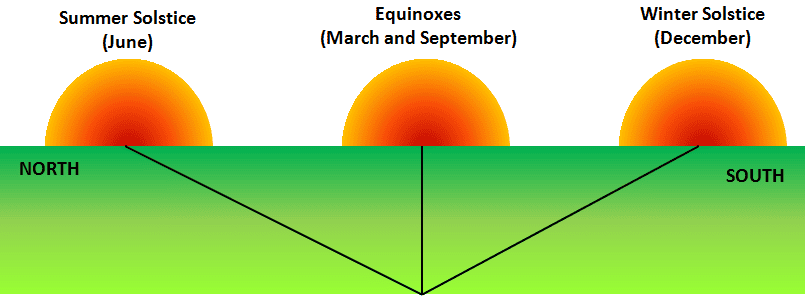
All of this is important stuff to consider. You will want to know exactly which angle will give you the best shot of both the subject and the colorful sky. And if there isn’t going to be a good sunrise or sunset in the position you want, you need to know this.
| READ MORE: |
 |
| Planning Your Travel Photos |
Let’s return to the exercise I used in my article on Planning Your Shots. In that article, I used a shot I wanted to get at Machu Picchu in Peru as an example. I explained how I research the shots I want to take before I travel. Among the questions that I mentioned you will need to answer in your planning are the following:
- Which direction will I need to shoot?
- What time is sunrise and sunset at the location when I will be visiting?
Well, I am now going to show you how to determine which direction you will want to shoot and how to determine when and where the sun will rise and set at your location on that specific day.
Using the Photographer’s Ephemeris
I know, it sounds like a lot more work. Don’t get too down though, as I have a few more tools to show you that will make this process a whole lot easier. The first tool is one that I mentioned previously, The Photographer’s Ephemeris (TPE) app for iOS or Android. Among many other things, the TPE app allows you to visually see where the sun will rise and set at a specific location on a specific day.
Going back to my example of Machu Picchu, I used the TPE app to determine which direction the sun will be rising and setting, and at what time, at Machu Picchu on September 6, 2018. The results are below.

As you can see, I searched for the location “Machu Picchu” within the app. Then, I selected the date “September 6, 2018”. This gave me a visual representation of when and where the sun and moon will rise and set on that specific day.
According to the app, the sun will rise at 5:52am along the yellow line on the map and set at 5:46pm along the orange line on the map on this specific day. The path of the moon rise and set are indicated by the blue lines.
This is great information for me because I had picked the location of the Casa del Guardian as a prime location to get the shot I wanted (I marked it on the map above with a red “x”).
Suncal.net Website
Now I know exactly where the sun will be rising and setting on that day relative to the location I am going to be shooting. This will help me determine how to compose my shot to best use the sun and its light. And if I am lucky enough to be there during the Golden Hours, I will be able to set myself up to get some good sunrise or sunset shots (if we are lucky enough to see good ones).
The TPE app is free to use. However, if you don’t want to install an app or don’t have a compatible device, there is another option. The website www.suncalc.net will give you much of the same information that the TPE app does. And with this website, there is no need to install a phone app.
Just search for your location, specify the date you will be visiting, and then look at the map to determine where the sun will be rising and setting on that day.
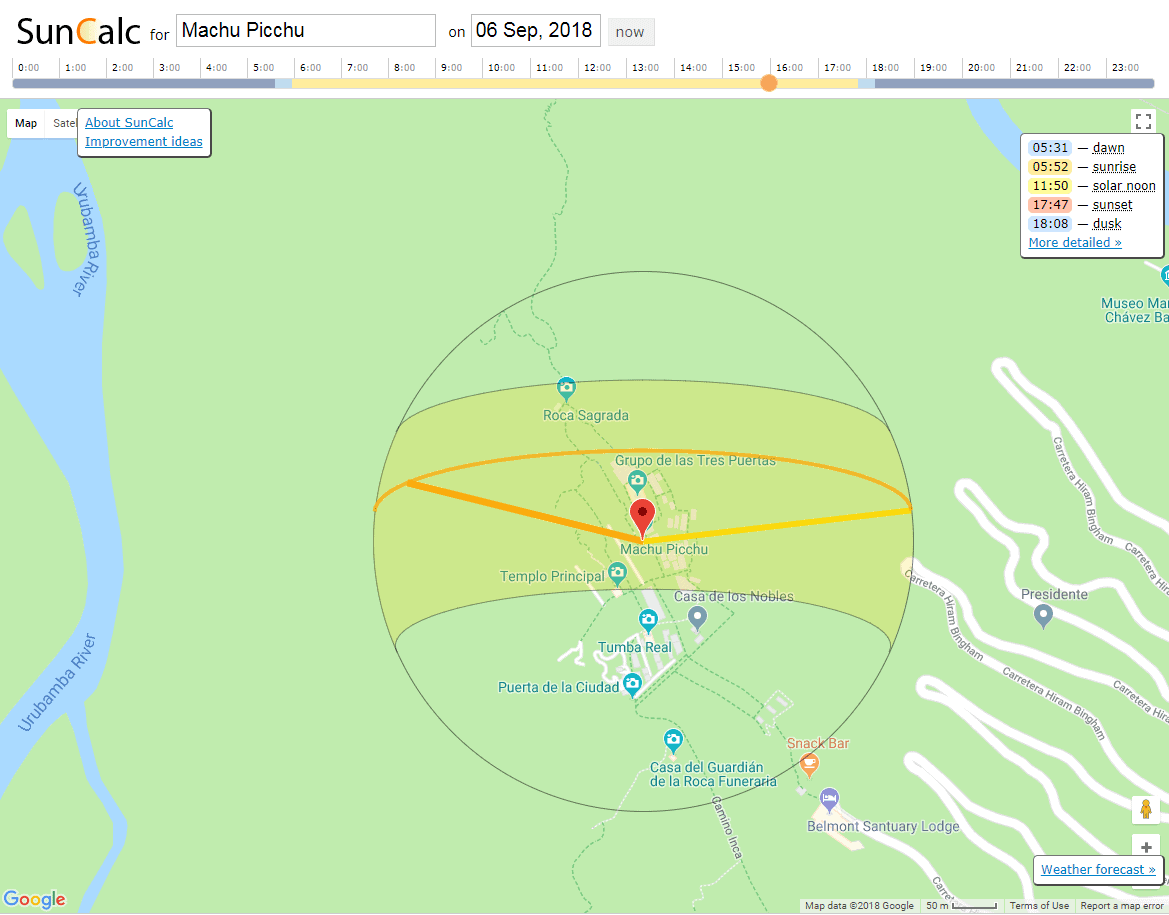
As you can see in the image above, I did a search for “Machu Picchu”. Then, I selected the date “06 Sep, 2018”. In the resulting map, you can see Machu Picchu as well as the yellow and orange lines that detail the trajectory of the sun. The lines show when it rises (yellow) and sets (orange) that day. I can also see the location that I want to shoot from, the Casa del Guardian. So, I will be able to use this map to plan how I want to use the sun’s light in my shots.
Summary
Being able to properly find and use light is one of the most important skills you can develop as a photographer. As a travel photographer, your job is even tougher as most of the locations you are shooting at you aren’t that familiar with. That is why learning how to do the proper planning, research, and scouting ahead of time is so important. When you master this, you will find it easier-and-easier to start predicting amazing sunrises and sunsets.
Don’t Forget to Subscribe to My Adventures!

Let Me Help You Save On Your Next Adventure!
‘Start Exploring Today’ Merchandise Available Now!












Very helpful, well-written, and informative as usual! Thank you for sharing those apps!
No problem Matt! Thanks for reading!
Reblogged this on Vietnam Travel & Trade Portal.
I thought your article was great. Thanks!
Thank you! Thanks for reading!
I found this fascinating. I take mostly sunrise pictures because of where I live and they are always magical in the Rocky Mountains.
Thank you for the kind words! I love the Rocky Mountains. I am guessing you have gotten to see some amazing sunrises!
Almost every day. I post them often but try not to be redundant.
I feel pretty lucky. I see a glorious sunrise almost every morning. These ones are beautiful.
Thank you so much for reading!
Over the years I’ve worked out some of these items, but it’s great to see them laid out logically – now I’ve got no excuse (except for the wind) about leaving sunrises/sets to chance! Thanks
Thanks for reading Annie!
Have I said lately how fortunate I feel to have found your blog? Thanks so much for all your wonderful tips Josh!
You are too kind LuAnn! Thank you so much 🙂
I am always grateful when I stumble across a photography website I can relate to, since I have sooo much more to learn.
Love it. Really beautiful👌🏻.Pls join my 30 day photography challenge . The details are on my blog http://www.shootmewithacamera.wordpress.com . Looking forward to it.😊❤️
Love this. Didn’t know that about the humidity. Probably explains why we get some good ones in Los Angeles despite the dirty air. Keep taking great photos!
Thank you so much for the kind words and for reading!
Amazing!! Please all follow my blog to see my Travel Photography I will be posting at the end of the month on my trip I will be going on round Cuba, Jamaica, Costa Rica and Guatemala for 4 months!
Awesome!! I will give you a follow. Can’t wait to see your pictures of Cuba!
Thanks Josh! I can’t wait to take them!! 😀
Very useful article Josh! Thanks for sharing these info!
Thank you so much!
You’re very welcome 🙂